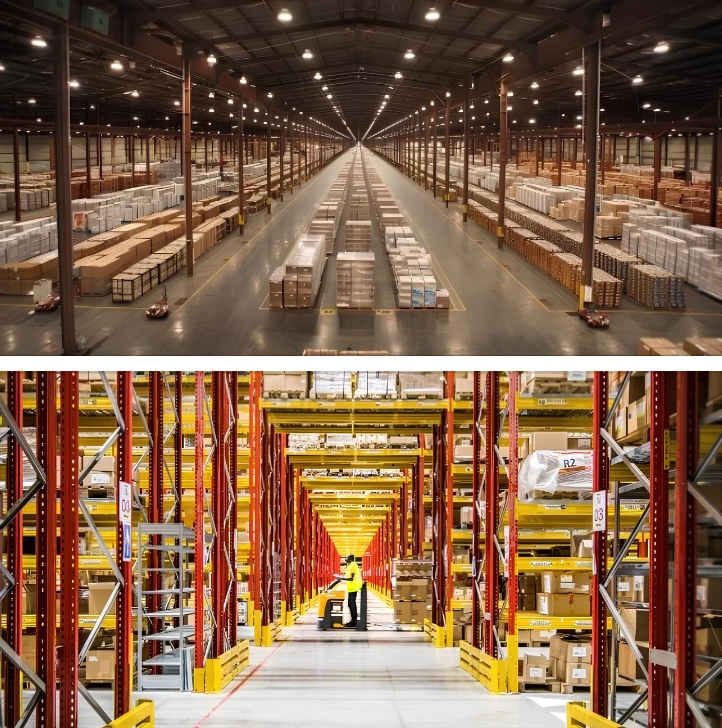Introduction: The Backbone of Modern E-Commerce
The explosive growth of e-commerce has fundamentally transformed global retail, placing unprecedented demands on warehousing infrastructure. In this rapidly evolving landscape, steel warehouses have emerged as the linchpin of efficient, scalable, and resilient logistics operations. Their inherent structural advantages, combined with their adaptability to automation and sustainability trends, position them as the go-to solution for future-proof supply chains.
Structural Superiority: Why Steel Dominates Logistics
Steel’s unmatched strength-to-weight ratio makes it the ideal material for modern warehouses. Unlike traditional construction, steel allows for vast, column-free interiors, critical for optimizing storage density and streamlining material flow. This design flexibility enables seamless integration with high-density racking systems and automated guided vehicles (AGVs), ensuring maximum operational efficiency.
Speed of construction is another game-changer. Pre-engineered steel buildings (PEBs) can be erected in weeks rather than months, drastically reducing the time-to-market, a decisive factor in the highly competitive e-commerce sector. Additionally, steel’s modular nature means warehouses can be expanded or reconfigured with minimal disruption, allowing businesses to scale operations dynamically in response to demand fluctuations.
Innovative Warehousing: Where Steel Meets Automation
Today’s warehouses are no longer static storage spaces but intelligent hubs powered by automation. Steel structures provide the robust framework needed to support cutting-edge technologies like:
Automated Storage and Retrieval Systems (AS/RS) – Maximizing vertical space utilization
Autonomous Mobile Robots (AMRs) – Enhancing picking and packing efficiency.
IoT-Enabled Monitoring – Real-time tracking of inventory, temperature, and energy usage
The clear-span design of steel buildings enables effortless reconfiguration, ensuring that facilities can evolve in tandem with advancements in robotics and AI-driven logistics.

Sustainability: The Green Advantage of Steel Warehouses
With environmental concerns taking center stage, steel warehouses are at the forefront of sustainable logistics. Innovations such as recycled steel alloys, energy-efficient cladding, and solar-ready roofing significantly reduce carbon footprints. Many modern facilities now achieve LEED Platinum or BREEAM Outstanding certifications, thanks to:
Passive cooling systems reduce HVAC dependency.
LED intelligent lighting with motion sensors
Rainwater harvesting for operational sustainability
Moreover, steel’s 100% recyclability aligns perfectly with circular economy principles—warehouses can be deconstructed and repurposed with near-zero waste, a key selling point for eco-conscious e-commerce giants.
Agility & Modularity: Adapting to E-Commerce’s Shifting Demands
The e-commerce sector thrives on adaptability, and steel warehouses deliver just that. Features such as reconfigurable mezzanines, quick-install partitions, and multi-purpose loading bays enable businesses to pivot swiftly between fulfillment models, whether handling bulk B2B shipments or direct-to-consumer parcels.
During peak seasons, such as Black Friday or Singles’ Day, pop-up steel warehouses can be rapidly deployed to handle overflow demand, ensuring seamless order fulfillment without long-term capital commitments.
Urban Micro-Warehouses: Solving the Last-Mile Challenge
Same-day and instant deliveries are no longer luxuries but consumer expectations. To meet this demand, steel micro-warehouses are being strategically embedded within urban centers. These compact, high-efficiency facilities offer:
Ultra-fast construction (often under 30 days)
Minimal land footprint for dense city integration
Durability to withstand urban wear-and-tear
By decentralizing storage, these hubs drastically cut last-mile delivery costs and emissions—a win for both businesses and sustainability goals.
Conclusion: Steel Warehouses as the Future of E-Commerce Logistics
As e-commerce continues its relentless expansion, the need for robust, intelligent, and sustainable warehousing will only increase. Steel structures are not just keeping pace with these demands—they are setting the standard.
From enabling AI-driven automation to supporting urban last-mile networks, steel warehouses have evolved from passive storage units into strategic assets that drive competitive advantage. For e-commerce leaders, investing in steel isn’t just an infrastructure choice—it’s a future-proof business decision.

